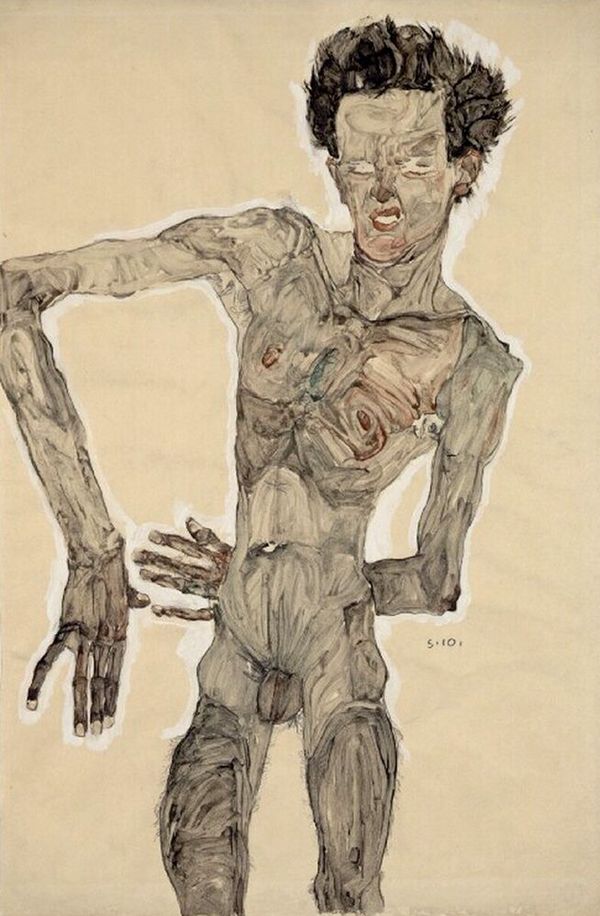The life and work of Egon Schiele
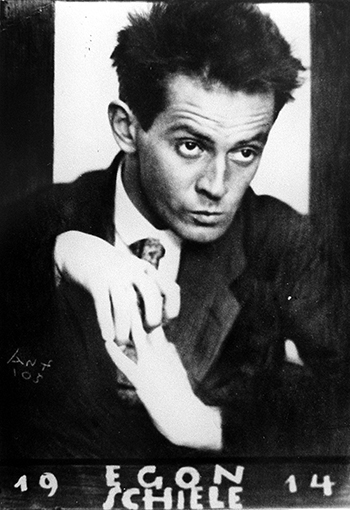
Egon Schiele (1890-1918) was an Austrian painter who is known - and still appreciated - for his groundbreaking expressive works.
Schiele is considered one of the most important figures of Austrian Modernism and a central artist of Austrian Expressionism. His works are known for their intensity and radicalism, representing a new truth beyond the conventional.
In his works, Schiele often focused on the human body and face, concentrating on unconventional perspectives and techniques. He was also known for addressing nudity and sexuality in his works, which was considered scandalous and provocative in his time.
Although Schiele's career was relatively short (he died aged just 28), he had a huge influence on the art world of his time and his works are still relevant and inspirational to many artists today.
Experience Egon Schiele in Tulln
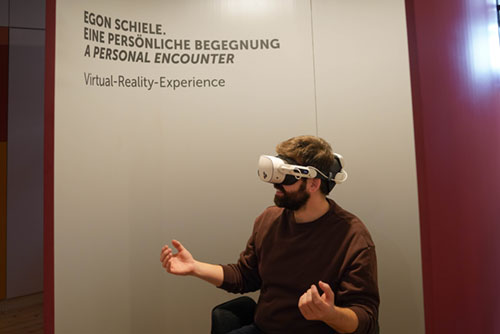
New: Virtual encounter with Egon Schiele
Visitors to the Egon Schiele Museum Tulln can now enjoy an impressive virtual reality experience: "Egon Schiele - A Personal Encounter"
Put on the VR glasses and meet Egon Schiele in person - in a fictitious conversation on his deathbed. Decide for yourself what you want to talk about with this exceptional artist: art, life, love or death. Top-class actors embody Schiele and his surroundings, creating a unique, emotional experience. As a special highlight, you will receive an AI-generated portrait of your virtual visit to Schiele - to take home with you.
Times: Tuesday to Sunday, at 11:00, 13:00, 14:00 and 15:00
Costs: included in the admission price
Booking: A timeslot must be booked in advance at www.schielemuseum.at/vr-experience
Duration: approx. 35 minutes
Discover more about Egon Schiele:
In the following sections you will find exciting insights into the life and work of the artist. Unfold the individual topics to discover background information, pictures and stories about Egon Schiele.
Egon Schiele's early life
Egon Schiele's parents and siblings
Egon Leo Adolf Ludwig Schiele was born on June 12, 1890 as the third child of Adolf Eugen Schiele, stationmaster of the local railroad station, and his wife Marie Schiele, née Soukup, in Tulln an der Donau in Lower Austria. He had three sisters, Melanie, Gertrude and Elvira. The latter, however, died of meningitis at the age of 10.
Childhood and youth in Tulln and Krems
Egon Schiele spent his childhood and youth in Tulln an der Donau and later in Krems and Klosterneuburg. He showed great interest in art from a young age and began to draw his surroundings.
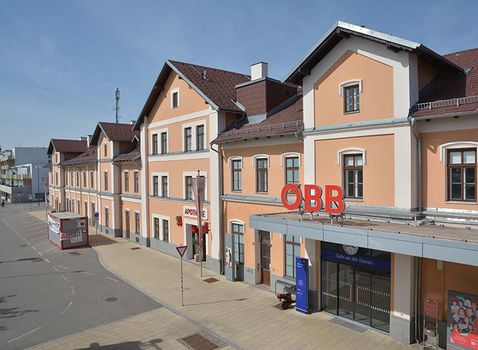
Discovery of artistic talent in Klosterneuburg
Schiele's artistic talent was recognized and encouraged by Wolfgang Pauker and Ludwig Karl Strauch, the religion and drawing teachers at the Klosterneuburg grammar school, as well as by the Klosterneuburg painter Max Kahrer. With their support, Schiele received his first artistic training.
Application to the Vienna Academy of Fine Arts
In 1906, the young Schiele applied to the Vienna Academy of Fine Arts and was "brilliantly" accepted with great praise. At the age of 16, Schiele was the youngest student of his year.
Start of his career
Entry into the Viennese art scene through the Neukunstgruppe
After increasing tensions with his teacher Christian Griepenkerl, a conservative painter committed to historicism, Schiele left the academy in 1909 and founded the Neukunstgruppe (New Art Group) with fellow students and a few like-minded people who wanted to distinguish themselves from the older generation of artists and their traditional themes. The group was an important platform for young artists to present their work to the public and make contacts. Through the Neukunstgruppe, Schiele was able to gain a foothold as a young artist in Vienna.
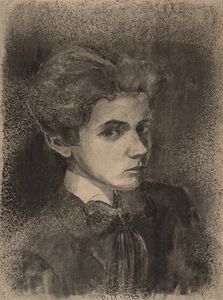
First exhibition and recognition
Schiele moved into his first studio in 1907 at Kurzbauergasse 6 in Leopoldstadt, near the Prater in Vienna, and exhibited his works for the first time in 1908 in a public exhibition in the Kaisersaal of Klosterneuburg Abbey. As part of the "International Art Show 1909", four works by Schiele were presented alongside works by Vincent van Gogh, Edvard Munch, Oskar Kokoschka, Henri Matisse and others, but they received little attention. In 1911, Schiele had his first solo exhibition at the renowned Miethke Gallery in Vienna, which was a great accolade for the young artist. His radical depiction of the human body in particular caused controversy and earned him a reputation as a scandalous artist. Nevertheless, Schiele's exhibition brought him his first recognition in the Viennese art scene. He was now regarded as one of the most innovative and interesting artists of Viennese Modernism and his works gradually became internationally known.
The pioneering acquaintance and friendship with Gustav Klimt
Around 1907, Schiele met the important Viennese artist Gustav Klimt, who was a European superstar at the time. Klimt impressed Schiele with his art, the incredible success of his works and exhibitions as well as his fatherly, friendly style, with which he accompanied the younger generation of artists. Klimt became Schiele's mentor and the two developed a close relationship. Klimt supported Schiele in his exhibitions, provided him with important contacts in the art world and helped him to sell his works. Even though Schiele soon developed his own artistic style, his friendship with Klimt remained formative for him.
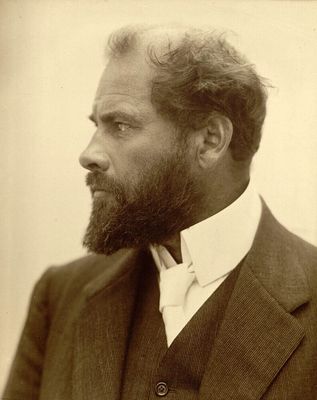
Artistic development and highlights
Turning point to the expressionist style
Egon Schiele's early work was still strongly influenced by naturalism. In 1908 and 1909, he moved closer to the work of Gustav Klimt, later saying himself that he had "gone through Klimt". In 1910, Schiele turned to Expressionism and developed his very own, unmistakable style. Groundbreaking works were created.
Artistic influence of Gustav Klimt and Vincent van Gogh
Schiele's encounter with Gustav Klimt had a decisive influence on his artistic development. He adopted the decorative aspect in his early works from Klimt. Vincent van Gogh's influence can also be clearly seen in Schiele's works. Van Gogh shared with Schiele a love of the motif of sunflowers and their pictorial representation in bright colors.
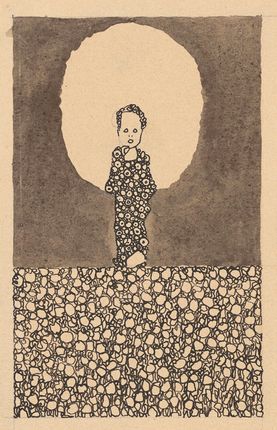
Self-discovery and borderline experiences in art
Schiele's work is often characterized by borderline experiences and the search for the self. He frequently thematized the human body, especially himself and the female nude. Schiele's depictions of people often appear fragile and vulnerable, especially in his self-portraits, the artist shows extreme experiences of his own existence.
Membership of the Association of Austrian Artists
In 1913, Schiele became a member of the Association of Austrian Artists, whose president was Gustav Klimt. In the same year, he exhibited his works at various exhibitions in Austria, Germany and Hungary. Initially controversially received by critics, Schiele was admired and appreciated by many artists of his time. Today, Schiele is one of the most important representatives of Austrian Expressionism.
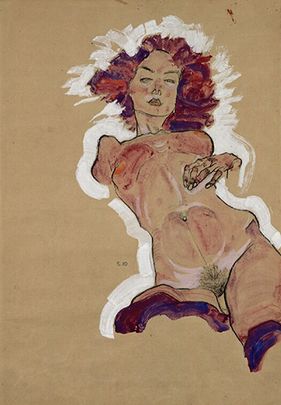
Muses and relationships
Liliana Amon
Liliana Amon was a model for Egon Schiele, whom he supported during the difficult phase of her pregnancy. Schiele, who was not the father of the child, referred her to the clinic of his friend, the doctor Erwin von Graff, where she gave birth to her child. Amon was a recurring motif in those works by Schiele that were created at the University Women's Clinic.
Wally Neuzil and the scandal surrounding Schiele's lifestyle
Egon Schiele met Wally Neuzil in 1911. Not only did he have an intense love affair with her, she also became his most important companion. Together they moved to Krumlov, the birthplace of his mother. This phase of Schiele's life was very productive artistically, but his eccentric lifestyle and his explicit depictions of his models met with resistance in the small Bohemian town. Schiele then moved to Neulengbach and wanted to stay there forever, but he also aroused the displeasure of the population in Lower Austria. The "Neulengbach Affair" ended Schiele's country life in April 1912 and the artist spent three weeks in prison. From then on, Schiele lived in Vienna.
Marriage to Edith Harms and break-up with Wally Neuzil
In 1915, Schiele was called up for military service and married his longtime girlfriend Edith Harms shortly before his transfer to Prague. The marriage forced Schiele to separate from Wally. Major works of art history reveal how difficult this separation was for Schiele.
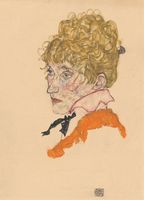
Military service and later years
Military service and artistic occupation as a military draughtsman
Egon Schiele was drafted into military service in 1915. He had to interrupt his artistic career. Despite his military obligations - for example in Mühling near Wieselburg - he managed to work as an artist on a small scale. He created numerous nature studies and portraits of soldiers. Whether they were Austrian officers or Russian prisoners of war made no difference to Schiele.
Return to Vienna and further exhibitions
In 1917, Schiele was transferred to Vienna. Here he was able to devote himself to his artistic work again and showed his works in various exhibitions. He was quickly recognized again for his unusual and provocative works and as an important representative of Viennese Modernism.
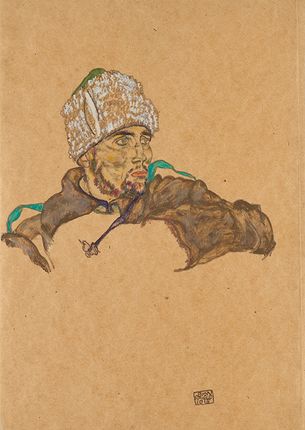
Last works before his death
Schiele had his greatest success before his death. At the 49th exhibition of the Secession in 1918, Schiele was celebrated internationally.
Death from the Spanish flu at the age of 28
In 1918, the Spanish flu broke out in Vienna. Edith Schiele, who was six months pregnant, succumbed to the disease on October 28. Egon Schiele was also infected and died on October 31, 1918 at the age of just 28. His death was a great loss to the art world. Despite his short life, he had a great influence on modern art and his works are still of great importance today.
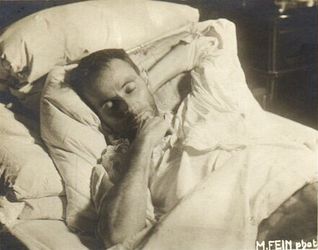
The significance of Schiele's work
Egon Schiele was one of the most influential artists of his time, who significantly shaped the art world and modernism with his unusual and provocative works. His legacy and the reception of his works are still present today and influence the contemporary art scene.
Influence on the art world and modernism
Schiele's art is characterized by his personal style, which approaches the human image in a new way. His new, expressionist style no longer shows the sovereignty of the individual, but his despair. For Schiele, nudity was something natural and normal, in complete contrast to the perception of his contemporaries, who saw it as a scandal. Schiele's landscapes are full of symbols; flowers and trees appear like people in his paintings.
Legacy and reception of his works
Schiele's legacy and his works are still present today. They are exhibited worldwide and honored in numerous publications. Schiele is regarded as one of the most important artists of the 20th century and his works are prized by collectors and art lovers. In the contemporary art scene, Schiele's work continues to be of great importance and is considered a source of inspiration for many artists. His unique way of expression and his personal style are still admired and imitated today.
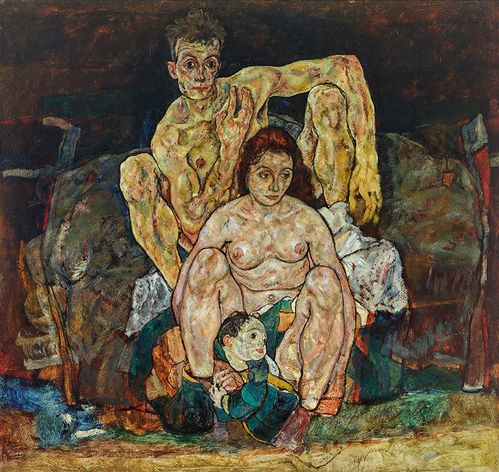
The importance of Schiele's art for art history
Schiele's art has taken an important place in the history of art and is considered groundbreaking for the development of modernism. His work not only influenced the art world of his time, but also subsequent generations of artists. Schiele's painting helped to break through the conventions of the art world and develop new forms of expression. His nudes and portraits were provocative and made a significant contribution to expanding the understanding of beauty and aesthetics. The ugly became beautiful.
Important works by Egon Schiele
The "Grimacing Nude Self-Portrait" of 1910 was created in the year in which Schiele produced most of his self-portraits and found his way to Expressionism. Many of these works were created looking into a mirror.
Other important paintings
1 Death and Girl (1915)
2. self-portrait with lantern flower (1912)
3. squatting female nude (1910)
4 Cardinal and Nun (Caress) (1912)
5. mother with two children II (1915)
6 Crouching Human Couple (The Family) (1918)
7 Houses with Colorful Laundry (Suburb II) (1914)
8 Dead City III (City on the Blue River III) (1911)
9 Portrait of Gertrude Schiele (1909)
10. embrace (Lovers II) (1917)
